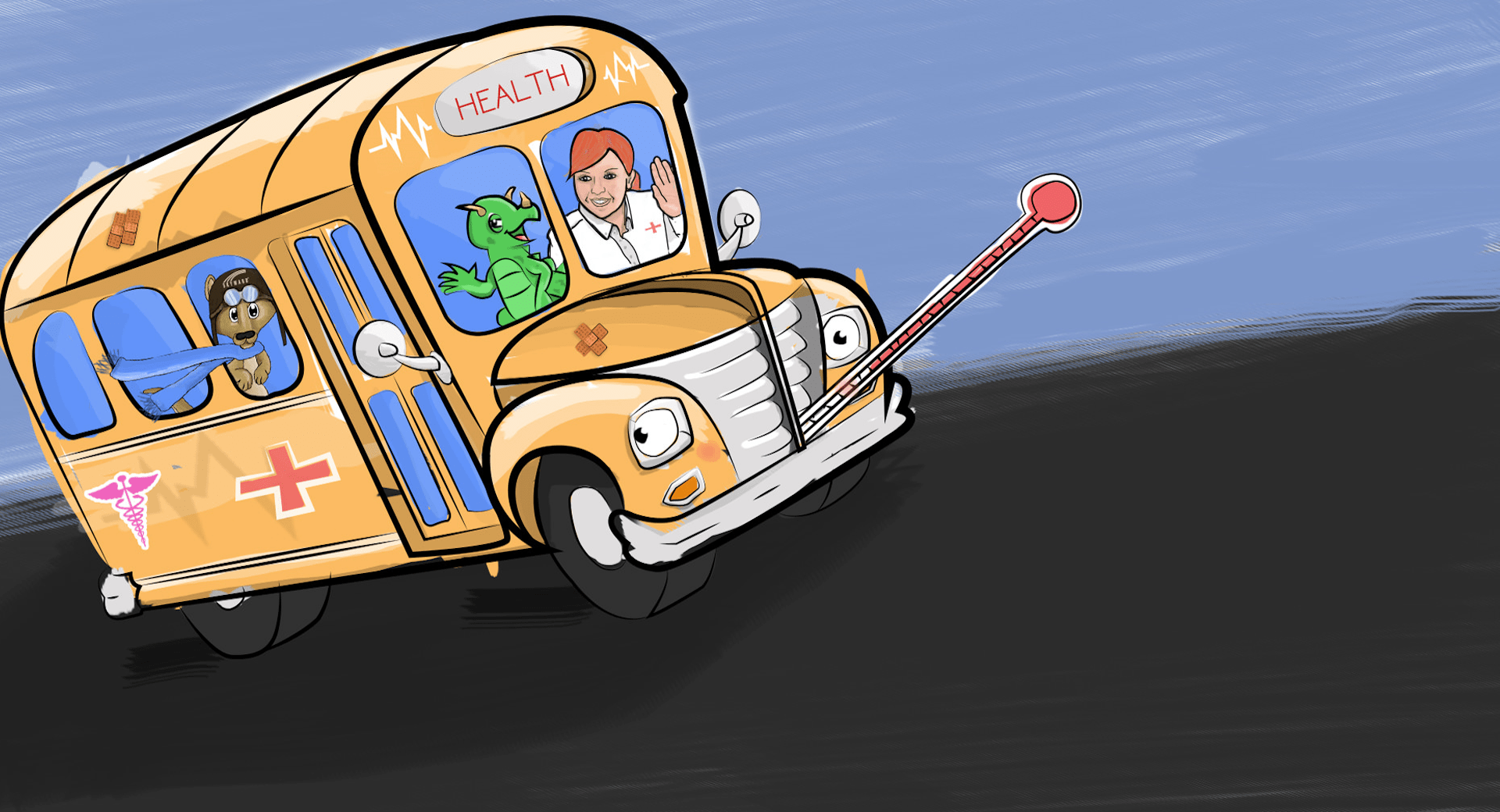
School nurses are responsible for larger geographical areas and more students than ever before. As a result, it’s vital for them to be able to travel quickly, set up in a flash, and access information from anywhere.
Short of magic, how is this possible?
By breaking free from the conventional brick-and-mortar school health office and adopting a more flexible setup – a mobile health office.
Let’s get the facts… Seatbelts everyone!
Why mobile health?
Mobile health clinics have been making an impact for decades – the University of Arizona Mobile Health Program has been providing medical care to Tucson residents since it started in a donated school bus in 1976. The Mobile Health Map currently lists more than 750 registered mobile health clinics.But school-based mobile health offices are a relatively new idea – and a timely one at that.
The number of American children with chronic health needs is skyrocketing, but half of them might not have a school nurse in the building when they need one. The National Association of School Nurses recommends one full-time school nurse for every 750 students in a building, but 38 states have a ratio that’s higher than recommended. Five states have just one nurse for every 3,000+ students. School-based offices with inconsistent coverage just aren’t meeting kids’ needs.
Availability of school health services matters more than ever before, and mobility can be a key component in keeping kids healthy, happy, and ready to learn.
What does a mobile health center look like?
Picture this: a health care center stocked with everything a nurse needs to provide care, from daily medications to vaccinations to glucose checks.Now add wheels.
The health center is mobile in both senses of the word – ready for travel and supported by mobile devices. Technology can support nurses in ways never before possible, from allergy alerts on a mobile app to digital office logs. Apps can make documentation-on-the-go easy and accurate whether the health center is parked in the school lot or the school forest.
Of course, it would be ideal to have a full-time, on-site school nurse in each building supplemented by a mobile health office. The reality for many districts, though, is that switching their current level of service to a mobile setup could bring huge improvements in their ability to serve students.
What are the potential benefits?
Rapid transportation and setup: A mobile health office isn’t a replacement for emergency services – nor should it be. But we’ve heard too many stories of students who didn’t receive timely treatment because their nurse was not scheduled to be in the building on a given day. In critical situations, every second matters, so a mobile and quick-to-set-up school health office can only help.Connectivity: A mobile health office, supported by mobile health apps, enables nurses to access to all the information they need to provide exceptional care wherever they happen to be.
Watch the Video: Rapid Response Can Save a Life
Ability to serve all students: With a traditional brick-and-mortar health office, students must go where the nurses are. A mobile health service helps schools care for students who may otherwise be underserved, such as students who receive homebound instruction.
Smart use of resources: Mobile health centers are compact and efficient, and they save valuable space inside the school building.
Many ways to go mobile: Mobile services are customizable. They can work in conjunction with site-based offices or become the primary vehicle for service. They can provide full health services or specialize in vision screenings, dental care, or vaccinations. Community-school health partnerships, like this one in Kalamazoo, Michigan, may be a great way to create an economically sustainable system and make services available to families and community members, as well.
Of course, there are limitations – mobile health offices shouldn’t be seen as emergency vehicles and they aren’t actually magical health buses (sorry!). But a shift toward mobile could help you transform the way you respond to and meet your students’ health needs.
As flexibility and mobility become the new status quo in our schools, learning can happen just about anywhere. One way to keep your students healthy and safe in this future-ready learning environment is to put your health office on the road with them.
WHAT'S NEXT FOR YOUR EDTECH? The right combo of tools & support retains staff and serves students better. We'd love to help. Visit skyward.com/get-started to learn more.

|
Leah Kruger Director of Product Management |




